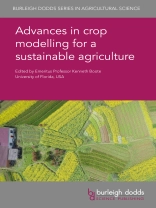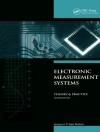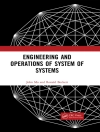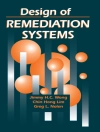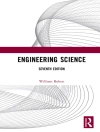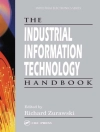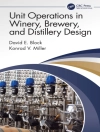This collection summarises key advances in crop modelling, with a focus on developing the next generation of crop and whole-farm models to improve decision making and support for farmers.
Chapters in Part 1 review advances in modelling individual components of agricultural systems, such as plant responses to environmental conditions, crop growth stage prediction, nutrient and water cycling as well as pest/disease dynamics. Building on topics previously discussed in Part 1, Part 2 addresses the challenges of combining modular sub-systems into whole farm system, landscape and regional models. Chapters cover topics such as integration of rotations and livestock, as well as landscape models such as agroecological zone (AEZ) models. Chapters also review the performance of specific models such as APSIM and DSSAT and the challenges of developing decision support systems (DSS) linked with such models. The final part of the book reviews wider issues in improving model reliability such as data sharing and the supply of real-time data, as well as crop model inter-comparison.
With its distinguished editor and range of experienced and expert chapter authors, this collection will be a standard reference for crop modellers and developers of decision support systems to improve the efficiency and sustainability of farming.
Содержание
Part 1 Modelling sub-systems
1.Advances and improvements in modeling plant processes: Soo-Hyung Kim and Jennifer Hsiao, University of Washington, USA; and Hannah Kinmonth-Schultz, University of Kansas, USA;
2.Functional–structural plant modeling of plants and crops: Jochem B. Evers and Leo F. M. Marcelis, Wageningen University, The Netherlands;
3.Improving modeling of nutrient cycles in crop cultivation: Upendra Singh and Cheryl Porter, International Fertilizer Development Center (IFDC) and University of Florida, USA;
4.Improving modelling of water cycles in crop cultivation: Claudio O. Stöckle, Washington State University, USA; and Francisco Meza, Pontificia Universidad Católica de Chile, Chile;
5.Improving crop pest/disease modeling: J. M. Fernandes, Embrapa/Universidade de Passo Fundo, Brazil; W. Pavan, Universidade de Passo Fundo, Brazil; D. Pequeno, International Maize and Wheat Improvement Center (CIMMYT), Mexico; R. Wiest, Instituto Federal Sul-Rio-grandense (IFSUL), Brazil; C. A. Holbig and F. Oliveira, Universidade de Passo Fundo, Brazil; and G. Hoogenboom, University of Florida-Gainesville, USA;
Part 2 Developing whole farm system, landscape and regional models
6.Whole-farm system models in practice: diverse applications: Alison M. Laing, Cam K. Mc Donald, Andrew J. Ash and Diane B. Prestwidge, CSIRO Agriculture and Food, Australia; and Holger Meinke, University of Tasmania, Australia;
7.The DSSAT crop modeling ecosystem: Gerrit Hoogenboom, Cheryl H. Porter, Kenneth J. Boote and Vakhtang Shelia, University of Florida, USA; Paul W. Wilkens and Upendra Singh, International Fertilizer Development Center, USA; Jeffrey W. White, USDA-ARS, USA; Senthold Asseng, University of Florida, USA; Jon I. Lizaso, Universidad Politécnica de Madrid, Spain; L. Patricia Moreno, University of Florida, USA; Willingthon Pavan, Universidade de Passo Fundo, Brazil; Richard Ogoshi, University of Hawaii, USA; L. Anthony Hunt, University of Guelph, Canada; Gordon Y. Tsuji, University of Hawaii, USA; and James W. Jones, University of Florida, USA;
8.Modeling crop rotations: capturing short- and long-term feedbacks for sustainability and soil health: B. Basso and R. A. Martinez-Feria, Michigan State University, USA; and B. Dumont, University of Liege, Belgium;
9.Integrating livestock production into whole-farm system models of mixed crop–livestock systems: Katrien Descheemaeker, Wageningen University and Research, The Netherlands; and Lindsay Bell, CSIRO Agriculture Flagship, Australia;
10.Integrating economic simulation models with whole-farm system models for ex ante technology impact assessment: John M. Antle, Oregon State University, USA;
11.Developing climate-based decision support systems from agricultural systems models: Clyde W. Fraisse, University of Florida-Gainesville, USA; Norman E. Breuer, Catholic University Nuestra Señora de la Asunción, Paraguay; and Victor Cabrera, University of Wisconsin-Madison, USA;
12.Landscape models to support sustainable intensification of agroecological systems: C. Nendel and P. Zander, Leibniz Centre for Agricultural Landscape Research (ZALF), Germany;
13.Agroecosystem models for delivering ecosystem services: Jerry L. Hatfield, Christian Dold, Erica J. Kistner-Thomas and Kenneth M. Wacha, USDA-ARS, USA;
Part 3 Modelling issues
14.Data for developing, testing, and applying crop and farm models: Frits K. van Evert, Wageningen University & Research, Agrosystems Research, The Netherlands;
15.Dealing with uncertainty in crop models: Daniel Wallach, INRA, France;
16.Crop simulation model inter-comparison and improvement: Senthold Asseng, University of Florida, USA; Pierre Martre, INRA, France; and Frank Ewert, University of Bonn and Leibniz Centre for Agricultural Landscape Research (ZALF), Germany;
17.The future of crop modeling for sustainable agriculture: K. J. Boote, University of Florida, USA;
Об авторе
Dr Claas Nendel heads the Research Group on Landscape Modelling at the Leibniz Centre for Agricultural Landscape Research (ZALF), Germany. He is also Professor of Landscape Systems Analysis at the University of Potsdam. Dr Nendel is the Past President of the European Society of Agronomy and hosted, among other events, the first International Crop Modelling Symposium in Berlin in 2016. He is principal developer of the MONICA model which simulates biophysical processes in agroecosystems to allow assessment of regional impacts of climate change, and is internationally known for his contribution to agroecosystem modelling.
